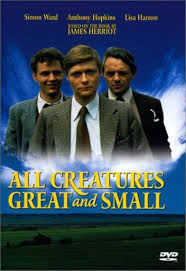The Significance of All Creatures Great and Small

Introduction
‘All Creatures Great and Small’ is a beloved book and series that has captivated audiences with its heartwarming tales of rural life and the relationship between humans and animals. First published in 1972, this work by James Herriot (the pen name of Alf Wight) has transcended generations, emphasizing the importance of compassion, empathy, and the deep connections we share with all living creatures. The relevance of this topic in today’s world is particularly profound as we continue to confront environmental challenges and the need for a harmonious coexistence with nature.
Historical Context and Impact
The book is a collection of stories based on Herriot’s experiences as a veterinary surgeon in the Yorkshire Dales, showcasing not only the quirky characters he encountered but also the challenges faced by farmers and pet owners. The narratives reflect a simpler time when rural life was more connected to nature, highlighting the significance of veterinary work in maintaining animal welfare. Herriot’s charming prose and ability to portray the personalities of both humans and animals have resonated with readers, leading to adaptations in television and film, which further popularised his stories.
Current Relevance
In the context of today’s climate crisis, ‘All Creatures Great and Small’ serves as a reminder of our responsibility towards animals and the environment. The recent remake of the television series has introduced Herriot’s stories to a new generation, reigniting interest in animal welfare and the importance of understanding our impact on the world. The series promotes discussions around veterinary science, the ethics of animal care, and the relationship between humans and animals, making it a pertinent topic for younger audiences.
Conclusion
The enduring success of ‘All Creatures Great and Small’ can be attributed to its universal themes of love, responsibility, and the bonds that unite us all, regardless of species. As society faces evolving challenges regarding animal rights and conservation, revisiting these tales prompts reflection on our actions and choices. Furthermore, it encourages readers to appreciate the simple joys and lessons that can be gleaned from observing and caring for all creatures, great and small. With the ongoing adaptations and renewed interest, it is likely that Herriot’s legacy will continue to inspire and educate future generations.









